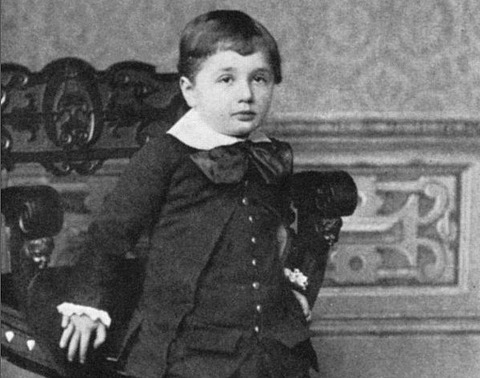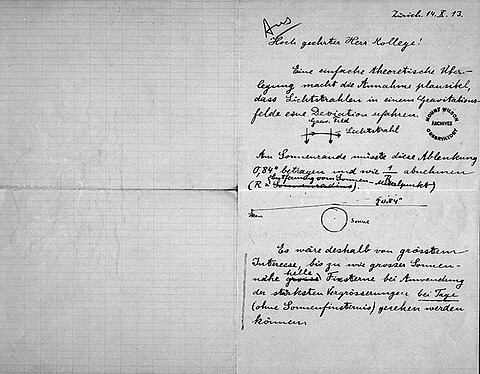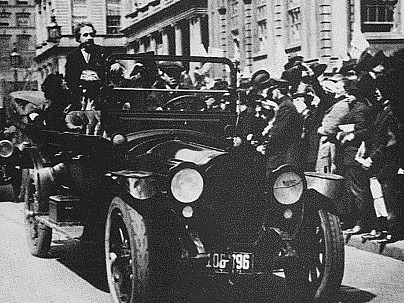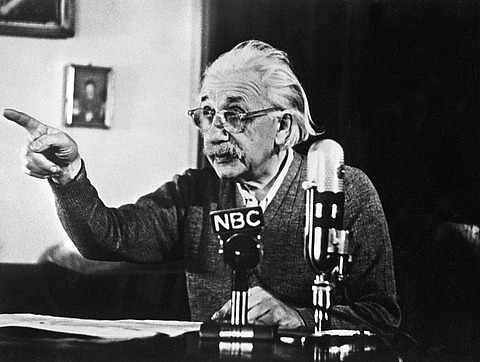Albert Einstein: In Brief
In 1879, Albert Einstein was born to a middle-class German Jewish family. His parents were concerned that he scarcely talked until the age of three, but he was not so much a backward as a quiet child. He would build tall houses of cards and hated playing soldier. At the age of twelve, he was fascinated by a geometry book.
1895
At the age of fifteen, Albert quit high school, disgusted by rote learning and martinet teachers, and followed his family to Italy where they had moved their failing electrotechnical business. After half a year of wandering and loafing, he attended a congenial Swiss school. The next year he entered the Federal Institute of Technology in Zurich.
It is almost a miracle that modern teaching methods have not yet entirely strangled the holy curiosity of inquiry; for what this delicate little plant needs more than anything, besides stimulation, is freedom.
1900
After working hard in the laboratory but skipping lectures, Einstein graduated with an unexceptional record. For two grim years he could find only odd jobs, but he finally got a post as a patent examiner. He married a former classmate.
1905
Einstein wrote four fundamental papers, all in a few months. The first paper claimed that light must sometimes behave like a stream of particles with discrete energies, “quanta.” The second paper offered an experimental test for the theory of heat and proof of the existence of atoms. The third paper addressed a central puzzle for physicists of the day—the connection between electromagnetic theory and ordinary motion—and solved it using the “principle of relativity.” The fourth showed that mass and energy are two parts of the same thing, mass-energy (E=mc2). Click here for more on the 1905 papers.
“I want to know how God created this world. I am not interested in this or that phenomenon, in the spectrum of this or that element. I want to know His thoughts; the rest are details.”
1909
Einstein became an assistant professor at the University of Zurich, his first full-time physics job. In 1911, he moved on to the German University of Prague. He continued to publish important physics papers, and was beginning to meet fellow scientists, for example, at the exclusive Solvay Conference. The next year, he returned to the Federal Institute of Technology in Zurich as Professor.

1914
Einstein moved to Berlin, taking a research post that freed him from teaching duties. He separated from his wife and two sons. When the First World War broke out, Einstein rejected Germany’s aggressive war aims, supporting the formation of a pacifist group.
1915
After a decade of thought, with entire years spent in blind alleys, Einstein completed his general theory of relativity. Overturning ancient notions of space and time, he reached a new understanding of gravity. Meanwhile, he continued to sign petitions for peace.
The years of anxious searching in the dark, with their intense longing, their alternations of confidence and exhaustion and the final emergence into the light—only those who have experienced it can understand it.
1918
As Germany collapsed, Einstein became more involved in politics and supported a new progressive party. The next year he remarried. And his general theory of relativity received stunning confirmation from British astronomers: as Einstein had predicted, gravity bends starlight. In the popular eye he became a symbol of science and thought at its highest.
1921
Aided by his fame, Einstein championed the fledgling German republican government and other liberal causes. Partly as a result of this, he and his theory of relativity came under vicious attack from anti-Semites. He began traveling, attended an International Trade Union Congress in Amsterdam, and he visited the United States to help raise funds for the Hebrew University in Jerusalem. The following year, he received the Nobel Prize.

1924
Einstein contributed to the struggling new quantum theory. Meanwhile, he searched for a way to unify the theories of electromagnetism and gravity. In 1929, he announced a unified field theory, but the mathematics could not be compared with experiments; his struggle toward a useful theory had only begun. Meanwhile he argued with his colleagues, challenging their belief that quantum theory can give a complete description of phenomena.
1933
Unwilling to live in Germany under the new Nazi government, Einstein joined the Institute for Advanced Study in Princeton, New Jersey. He turned away from strict pacifism, and he warned world political leaders to prepare for German aggression. He also worked to rescue Jewish and other political victims of the Nazis.
1939
Einstein signed a letter that informed President F. D. Roosevelt of the possibility of nuclear bombs, warning that the Germans might try to build them. The next year, Einstein became an American citizen.
“How I wish that somewhere there existed an island for those who are wise and of goodwill! In such a place even I would be an ardent patriot.”
1952
Einstein was asked to become the second President of the State of Israel but declined. He was supporting many causes, such as the United Nations and world government, nuclear disarmament, and civil liberties.

“The feeling for what ought and ought not to be grows and dies like a tree, and no fertilizer of any kind will do much good. What the individual can do is give a fine example, and have the courage to firmly uphold ethical convictions in a society of cynics. I have for a long time tried to conduct myself this way, with varying success.”
1955
The search for a true unified field theory for a more profound understanding of nature continued to fill Einstein’s days. While corresponding about a new anti-war project and writing a speech for Israel, he was stricken and died.
One thing I have learned in a long life: that all our science, measured against reality, is primitive and childlike—and yet it is the most precious thing we have.
This resource on Einstein’s life and work is based on a traveling exhibit that was originally created for the Institute for Advanced Study by The Center for History of Physics on the occasion of the Einstein Centennial in 1979. It was reformatted into an online exhibit, Einstein: Image and Impact, which is available in its entirety through The Center for History of Physics © Copyright 1996–2016 American Institute of Physics.